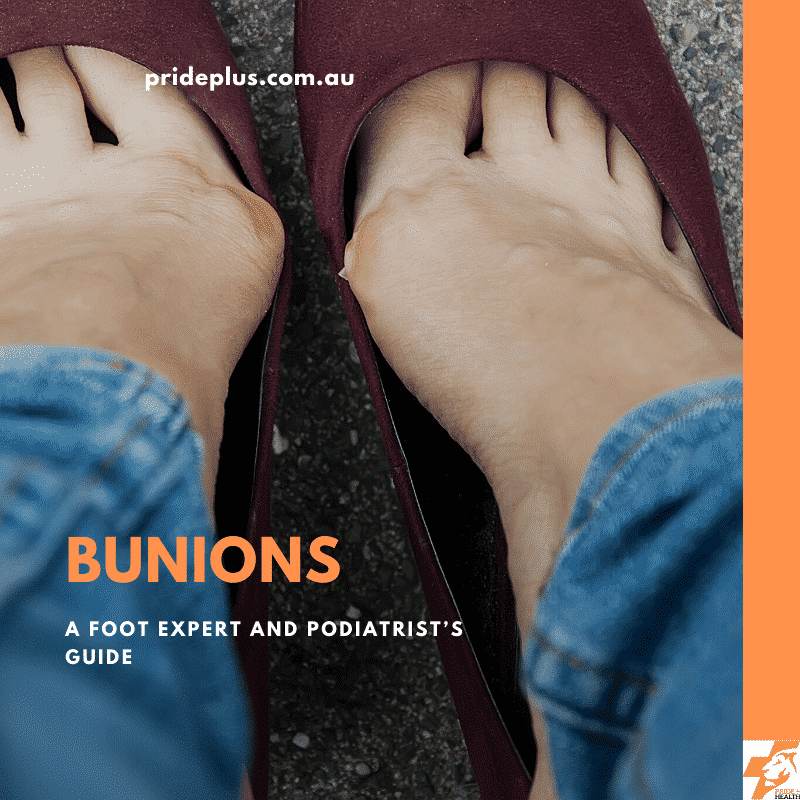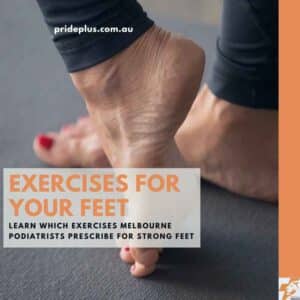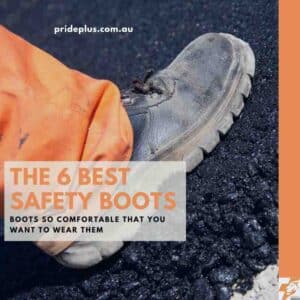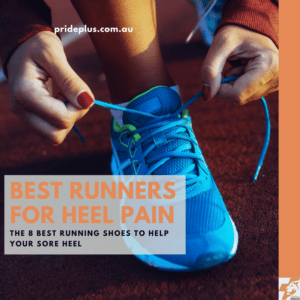Bunions – The word itself strikes fear into me as a podiatrist of 10+ years. Bunion is such a loaded term. I’ve had family members wave their feet in front of me asking about their bunions. Then there are the thousands of clients claiming they have bunions. I’ve read more research articles on the topic of bunions than I’ve had hot dinners. Ok, that ones stretching the truth. But know this. If it’s bunion related or bunion adjacent, I’ve heard, read, spoken or worked with it.
So why does the term bunion strike fear? Because everyone has an idea about what a bunion is, or isn’t. As a podiatrist I have been told by people their bunion is a lump on the side of the big toe. I’ve also been told that someones bunion disappeared after praying in church. Then there’s the line where I was told that the only way to fix bunions is to rub hemp oil on them. Or that surgery for bunions is always necessary.
So let’s break down what bunions are. What they’re not (usually). Finally if you have a bunion, what you can do about it.
What is a bunion?
A bunion is more of a colloquial term than a diagnosis. It usually referrers to a bony lump that builds up around the big toe joint (the 1st metatarsophalangeal joint). Often, the 1st metatarsal (the long bone that is still in the foot – before the big toe) is deviated and pointing out. Then, the big toe itself starts to drift in towards the 2nd toe.
The more correct anatomical description for this “deformity” is HAV – hallux abducto valgus. This describes the changing position of the big toe (the hallux). In reality, you can call it whatever you like, a bunion, a lump, a bunyip. Depending on what your bunion feels like. What caused it. Whether it impacts your life at all will lead you to your ideal treatment options.
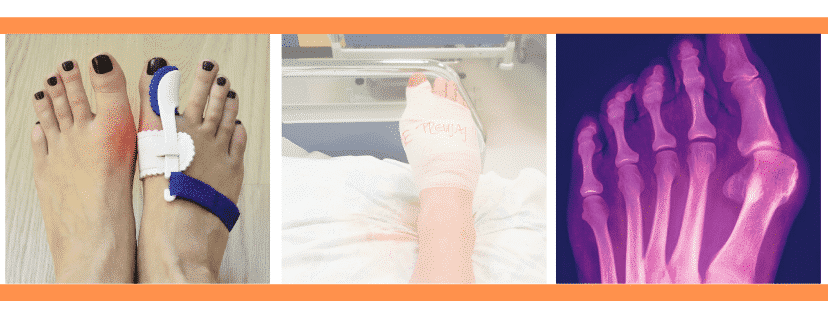
Bunions: To treat or not to treat. We will come to that shortly, but first, let’s look at what causes them.
What causes bunions?
The classic, HAV bunion we talked about above has numerous causes. For the big toe and 1st metatarsal to drift you need to stress that area of the foot more than it likes. And stress it consistently and repeatedly. This stress might occur due to higher than normal demands from certain shoes, the classic example being high heels.
In a high heeled shoe the 1st MTPJ is always stressed in a dorsi-flexed position. This means it’s bent back. When walking in heels it is twisted at toe off side to side.
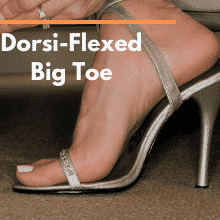
Do this a couple of times and your foot will be fine – no bunion formed. Do this 10,000x per day, every day, and you’ll have a high chance a bunion will occur.
At other times the high demands could be due to activities. Sprinting and dancing asks a lot of the 1st MTPJ. As we have learned, if you demand a lot, and twist it a lot, HAV can occur here too.
Another key factor in bunion development is joint mobility. If you have highly flexible joints, and not enough strength to control the movement in those joints you can twist them more and yep, you guessed it. HAV can start. This tends to be a factor that is passed down and part of what makes bunions congenital. If mum, dad, nan or pa had HAV, there’s a reasonable chance you will develop a bunion too.
As the causes of bunions are all contributing factors, and not definitive causes it means than any of the following can contribute to a bunion forming:
- Shoes (heels, flexible soles, narrow toe box)
- Activities (dancing, sprinting)
- Family history
- Weight (the heavier we are, the more work our feet have to do)
- Joint axis’ and bone shape
- Sex (yes, women more than men)
Do bunions hurt?
This question might seem like a strange one. You might assume that having a large bunion would be painful, but for many people they aren’t painful at all. Sometimes the smallest little change can be incredibly painful. Sometimes there’s no pain during activities, but pain at night. Other times a bunion can be that sore when you’re walking but settle immediately at rest.
When bunions are sore – there are two main drivers of pain.
- Friction on the skin, outside of the bunion
- Compression within the joint (inside the bunion)
To work out which of the two types of bunion pain you’re suffering with think about when your bunion gets sore.
Is it just in certain shoes? Think tighter shoes, harder upper materials on the shoe.
Are there always red marks on the skin over the bunion when you take your shoes off?
Do you develop corns or callus over the bunion?
If you answer yes to those then it’s more likely that the friction is the main driver of your bunion pain.
If your bunion is more sore when you’re active, an ache deep within the foot, or even pain lingering after rest then it’s more likely to be internal joint compression driving the symptoms.
A huge caveat here – pain is a subjective summary we do of our activities, stressors and our environment. This article is very much general in nature, if you have a painful bunion you should see a podiatrist for an assessment.
Bunion treatment: What can you do?
To treat a bunion you need to work out what it is you’re actually treating! Seems obvious but I’ve had many second-opinion consultations as a podiatrist where this has not been established prior.
If your bunion is sore, then treating the causative factors will settle those painful symptoms almost all of the times. This would mean working out whether your HAV pain is from friction on the outside, or compression on the inside of the deformity. Tracking back to those points above. Your podiatrist will assess all the potential causative factors and come up with a plan to change the things you can.
Now the elephant in the room when talking about bunions is their look. As a podiatrist I do not see feet in a beautiful vs. ugly way. They’re fascinating! Not pretty, and certainly not ugly. However – every single day I hear someone describing their hideous feet, and referencing the look of their bunion.
If you’re reading this thinking you do not like the look of your bunion but it does not hurt or cause you any issues day to day, then we need to talk about cosmesis of bunions. This really only can mean one thing. Bunion Surgery.
Bunion Surgery: What to consider before seeing a surgeon
As with any surgery, there are many risks associated with a procedure. As time and surgical techniques evolve, the risks tend to decrease. But we have to talk about how serious bunion surgery actually is.
A bunion at the big toe joint is a sign of a lot of hard work occurring at that joint. You might be surprised to know that the big toe joint is the hardest working joint in the body in terms of peak loads. That’s right, up to 8x your bodyweight will be transferred into the big toe joint or bunion during certain activities. Because of these very high demands, and relatively small bones involved joint replacement is not usually an option for people potentially undergoing bunion surgery.
In Australia bunion surgeries are usually completed by orthopaedic or podiatric surgeons. Depending on the surgeon, your bunion, your factors contributing to you bunion and your goals, the actual surgery to treat your bunion can vary greatly.
The more common and successful approaches to HAV surgery will usually consider changing the angle of the 1st metatarsal. This is done with a procedure around the base of the 1st metatarsal close to the middle of your foot. Usually that’s done in conjunction with a procedure to change the angle of the big toe as well. Doing some “bone work” on the proximal phalanx (the first bone that makes up the big toe). Shaving back of the bony build up on the side or the top of the joint often happens here. Finally, a surgeon will often “balance” the tendons by shortening and lengthening the tendons which pull on the big toe. It’s a lot of work, and not something to be taken lightly.
The surgeons who operate on bunions are absolute experts in what they do. To consider all of your needs and then come up with an appropriate surgical procedure is mind-boggling complex. It’s no surprise then that there are often people who regret having bunion surgery if they either see a surgeon not specialised in treating bunions, or having different expectations to what they will be doing on their feet after the surgery than what the surgeon did.
Do people regret bunion surgery?
Like any surgery, or any regret, most conflicts start with poor communication. With this in mind, prior to having a surgery on a bunion I always encourage my clients to write down a list of what they want to get out of the surgery.
What they expect their foot to be like.
After surgery what activities they expect to be doing.
What shoes they expect to wear and when.
If these questions cannot be answered satisfactorily then consider seeing another surgeon, or potentially whether surgery is even appropriate for your bunion and expectations.
What about other treatment options? Do those bunion splints actually work?
In a word. No.
A bunion splint that is worn at night can provide some short term comfort and relief however as they don’t get to the causative factors of why a bunion developed in the first place, they don’t get rid of a bunion.
A bunion splint may have a role to play post surgery however in the rehab phase. After a surgery where the joints have been reshaped, bones aligned and tendons balanced a splint can be used to keep things just a little more stable while getting back into activities and waiting for healing to occur.
What about taping or strapping to treat bunions?
Strapping the big toe using a rigid sports tape can be an excellent way to reduce pain from the compressive forces acting inside the joint. It’s a really good front line pain relieving treatment that we often recommend in clinic.
What taping a bunion won’t do is change the look and shape of a bunion. That bone has moved or extra bone has already been built – no amount of magic tape, no matter the cool colour pattern is able to remove or “align” a bone.
What about exercises for bunions?
Now we’re talking!
As many bunions are formed due to increased movement around the big toe joint you can decrease any excessive movement with strength based exercises. These exercises would target the forefoot stabilising muscles which are located within the calf and some smaller muscles in the foot.
What about foot orthotics for bunions?
Just like exercises, foot orthotics for bunions work on the same principles. If there’s too much loading and movement going through the big toe joint leading to a bunion, you can reduce or optimise it with an orthotic.
An orthotic can be useful if your bunion is sore on the inside, think those compressive forces we talked before. Using an orthotic is a great way to slow the progression of a bunion. Post surgery, orthotics are again a really valuable tool to allow return to activities as quickly as possible.
What orthotics cannot do is straighten a bunion or remove already built up bone.
What shoes should I wear for my bunions?
Ideally a shoe is wider than your foot so that the upper doesn’t pinch and provide extra friction over the joint. Having a soft upper (soft vs. patent leathers or engineered mesh in athletic shoes) is usually more comfortable than a hard upper. The sole of a shoe is also important as too much height or too much flex in certain areas can lead to increased compression within the bunion.
In saying all of this – usually our shoes will tell us straight away whether they are right for our feet. If they hurt – that’s not a good shoe for you!
How to make shoes wider for bunions?
There are some modifications you can make to shoes to allow your foot to fit more comfortably. A quality cobbler or boot maker can do some professional modifications where they cut out areas and replace them with patches to increase stretch around bunions. They can also stretch the upper of quality leather shoes to give you more room around your bunion.
You can try stretching your shoes yourself if you’re game. It’s risky, and can damage your shoes but with a hair dryer, a broom handle and some muscle strength you might get that extra millimeter or two in your shoes to make them more comfortable. I am absolutely NOT recommending this, just saying it’s an option and you can do so at your own risk.
Stretching a shoe for a bunion
Start with a quality leather upper shoe. Use the hairdryer on hot to heat the upper directly over the big toe joint.
Warning – the leather will get hot, and if not great quality can be damaged from the heat and the shoes ruined.
Next, use the broom handle and push from the inside of the shoe out, into the soft and hot leather to stretch it. You might need to repeat this a few times.
This sounds tricky and potentially dangerous and shoe ruining, because it is. Best to see a cobbler or boot maker and get a professional to do it for you.
Conclusion
Bunions are common, so much so that for most of us they are a part of everyday life. If you want to have an in depth assessment of your bunion then see a podiatrist who can give you some specific targeted advice.
And finally, I’m going to come clean.
I’ve got a bunion.
It gives me no pain with most normal shoes I wear, and most normal activities including running, sprinting, cycling and carving up the dance floor. I wear shoes that are more supportive for my foot most often. Then there are my orthotics which I wear in certain shoes for certain activities. I exercise my foot muscles regularly to build and maintain strength. I’m not fussed about the appearance of my bunion, and as there’s no pain, I haven’t felt the need to get surgery on my bunion. But I’m not saying never there either.
That was cathartic.
If you want to talk bunions our podiatry team are ready to listen.

